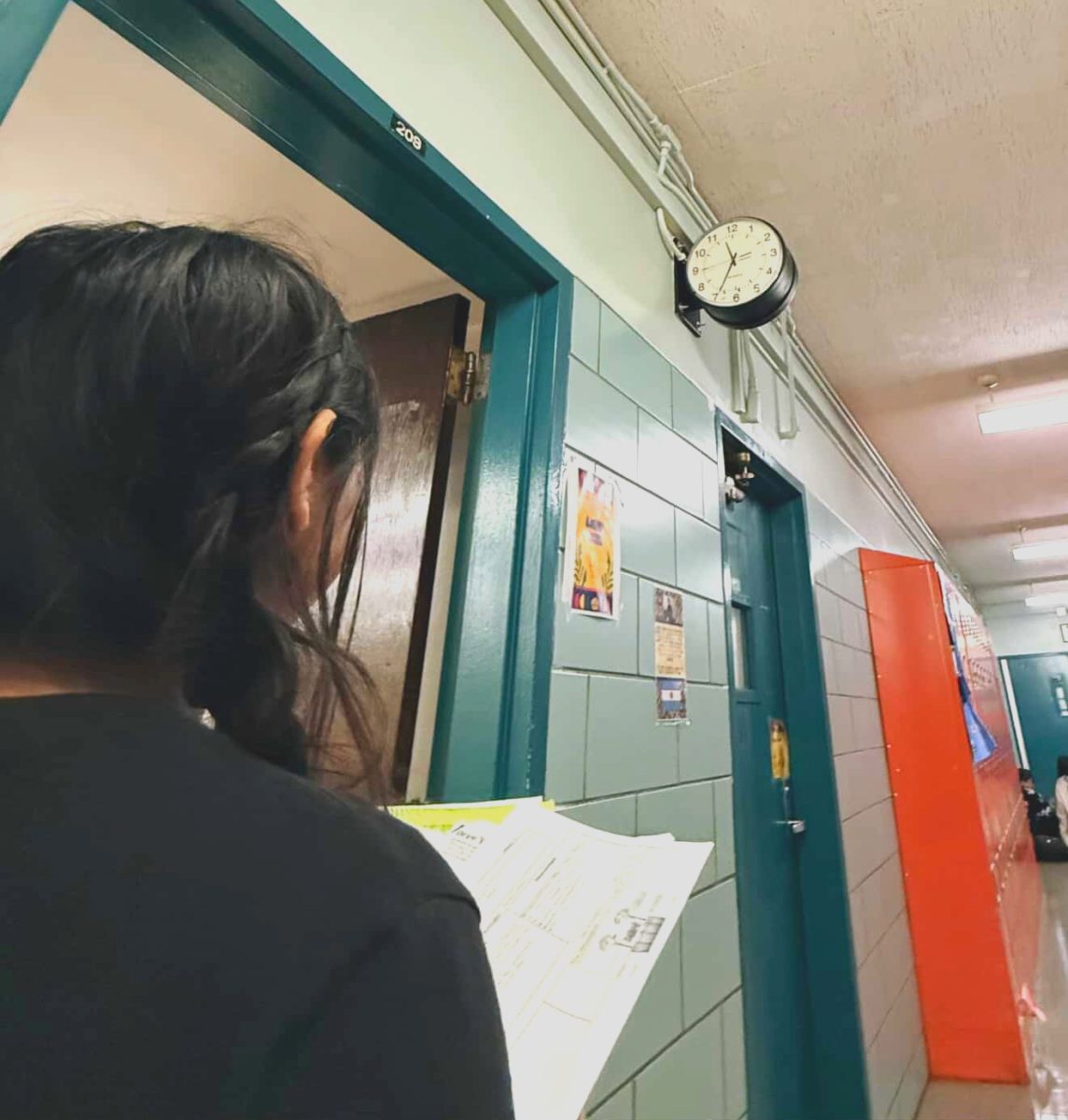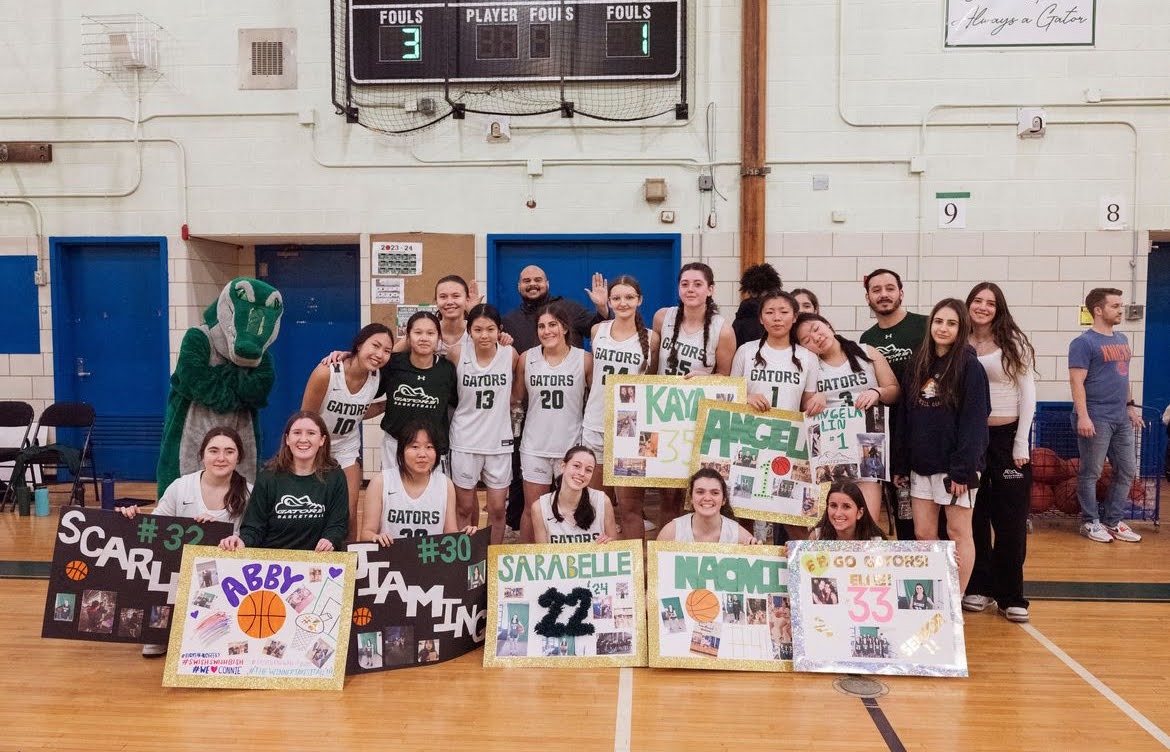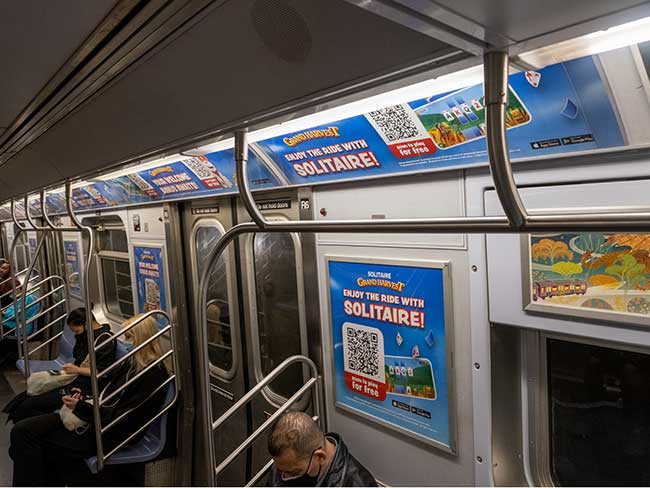It’s your everyday commute to school, waiting for the train for anywhere between 5 to 30 minutes. You get on the packed train car people breathing down your neck, suddenly hit with an unidentifiable stench. Then in between stops, the train lurches to a halt in the middle of the tunnel. Ten minutes go by and the garbled voice of the conductor comes over the speaker, “It will be a while due to lost signal”.
There’s no wifi, nothing to do but observe your surroundings which happen to be ironically expensive screens trying to convince you to purchase goods. You can’t help but wonder, why all the excess technology? Why is the technology so advanced while the conditions of the trains are still so poor?
Over the course of three years, the MTA installed over thirty-five thousand advertising screens in the trains and stations and introduced OMNY, a contactless pay system that includes a small screen on turnstiles. The increased screens around us are detrimental, they can contribute to sleep loss, mood changes, and even depression. “The cortex is the outer layer of the brain that processes information.” “A study called Adolescent Brain Cognitive Development (ABCD) revealed that some kids who use screens more than seven hours a day had a thinner cortex than those who used screens less”(Can Too Much Screen Time Harm You?, Heads Up).
We are told by doctors, teachers and our parents that we should spend less time on screens, that it could affect brain development, but at this point, there isn’t any choice. As a student living in New York City, an average schedule includes going to school by train, being unwillingly exposed to screen advertising, and then going to school where most classes require the use of laptops.
Regardless of time spent on a phone, there is still plenty of screen time that as students, we can’t control. Considering train efficiency, it seems as though the screens would benefit the income of the MTA as the 800 million dollars that it costs to install and purchase these screens were covered in full by Outfront Media. This advertising will in turn make the MTA over 100 million dollars annually.
While this extra income would be extremely beneficial for an everyday commuter as one would hope they would put this towards cleaning the stations, the MTA doesn’t have the best track record regarding the use of funds. “The MTA’s current $52 billion capital plan — which officials promised would save the subway after it had once again fallen into disrepair — relies even more heavily on debt.” The MTA is already in debt and it seems as though they are floundering.
“If you can’t implement your capital plan and your system falls into disrepair, it’s going to make it harder for people to want to use the trains and the subways and the buses,” DiNapoli said.” (A $48 billion debt is crushing the MTA. Paying it off could disrupt the future of NYC transit. The Gothamist.) The MTA’s debt is not the only reason why the trains aren’t clean, it’s their inability to budget properly. In 2013 the MTA had the highest level of riders in 65 years at 1.7 billion people with a total revenue increase of 34%. Yet they fired 48% of their cleaning staff causing 97% of tracks to not be cleaned on schedule. (Business Insider) There is a serious issue with budgeting that will cost them more money in the long run as increasing trash on the tracks results in track fires causing delays.
Another type of technology that has recently been added to the trains is the OMNY cards and screens for using your credit card or phone to pay. An OMNY card on its own is 5 dollars, not including train fare. The plan is to fully replace the metro card with the OMNY card by 2024 because they believe it will be more efficient as you can effortlessly tap to pay.
In reality, it is an extremely elitist move by the MTA. With their new system, riders will either already have Apple Pay, link their MetroCard to their phone, or purchase a five-dollar OMNY card. This is all in addition to the inflated 2.90 for just one ride. The metro system is meant to be accessible for all New Yorkers however the more additions they make with technology, the more it becomes exclusively for wealthier people. This is extremely ironic considering the price increase has not created a better train experience as the cleanliness and efficiency of the trains aren’t improving.
The current conditions of the train stations and train cars are repugnant. AMNY wrote about the increasingly disgusting train stations “‘The tracks have become appalling garbage dumps, ‘Stringer said at a news conference outside of the F train stop at East Broadway. ‘The MTA has failed to clean them according to their own standards.’” Similar to this, the New York Post reported that in one month in 2020, 132 train cars were soiled. (New York Post MTA Docs reveal how gross the MTA New York City subways have become) With increased prices, New Yorkers shouldn’t have to endure these disgusting conditions, especially considering their yearly budgets. The budget for 2022 is a whopping 19 billion dollars. Daily ridership in New York City is approximately 2.4 million on trains and 1.2 million on the bus. This are an estimated 3.6 million people who are subject to this uncleanliness and frankly, it’s unsanitary.
While the addition of technology can help create a better, more efficient world, how the MTA is incorporating technology are not beneficial to commuters. It’s not fair to New Yorkers and in actuality not benefiting any aspect of the MTA.



























